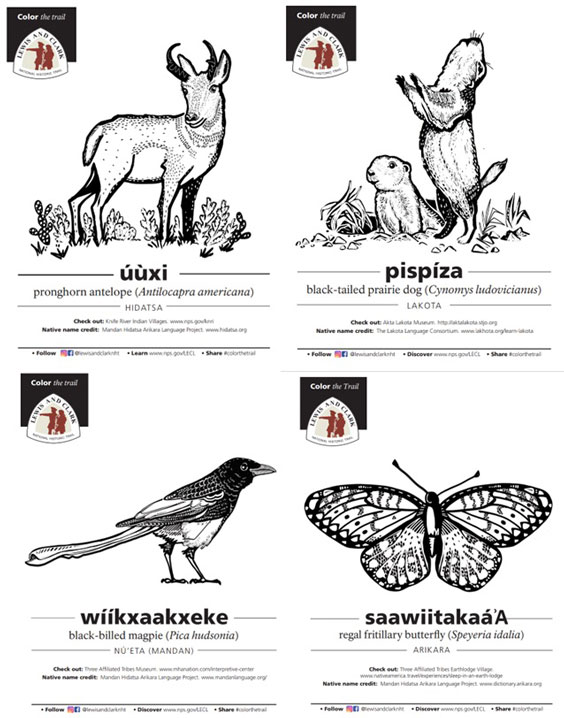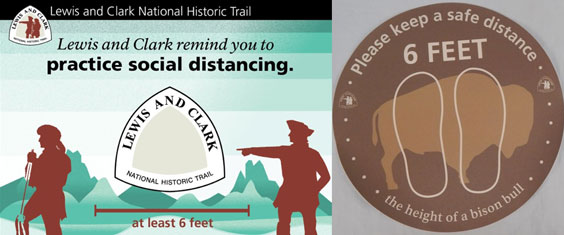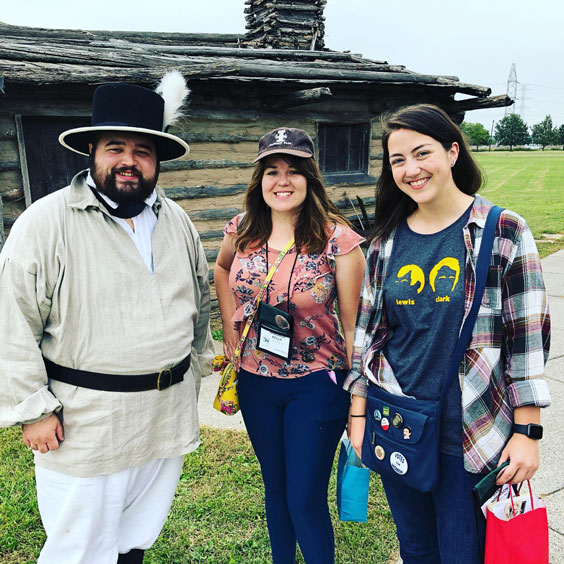State Capitol Building Light Displays: An Early History
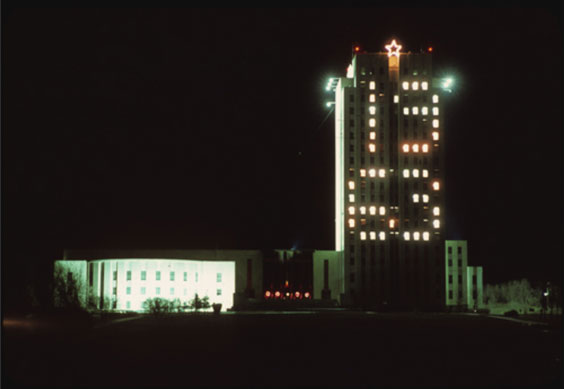
A state Capitol light display announces the new year, 1963. SHSND SA 30878-00540
Most people in North Dakota have seen the face of the state Capitol building lit up in various designs, either in pictures or in person. Some instances include a green and red tree at Christmas; the date of the upcoming year on New Year’s Eve; “ND 125” to mark the 125th anniversary of statehood; and other displays for various celebrations and remembrances.
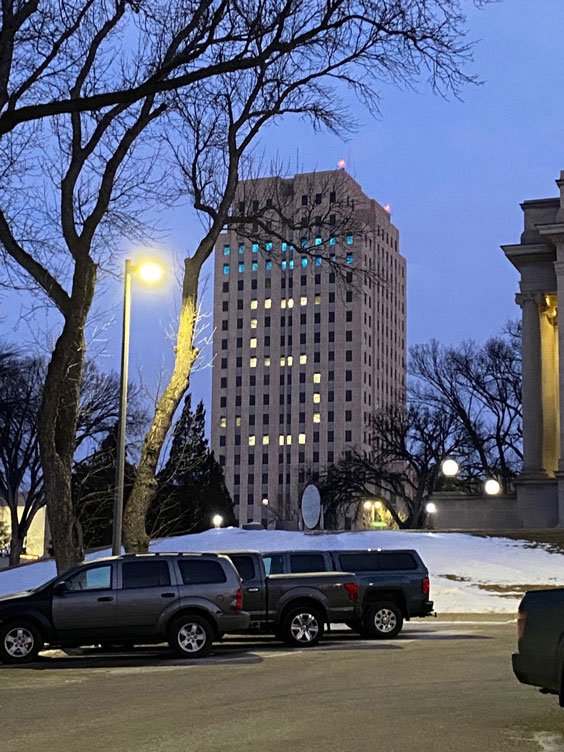
The Capitol building displayed the number five and the blue lines in honor of North Dakota Attorney General Wayne Stenehjem after his death in January 2022.
However, there seems to be some confusion about the history of this tradition. For example, I’ve found many secondary sources stating that the Christmas tree was first displayed on the side of the Capitol building starting in the 1940s. Actually, use of these light displays, including the tree, began earlier than that. I think this misconception stemmed from people guessing at specifics while reminiscing and was compounded by the difficulty determining how and where to find the exact information. Then, the false information was perpetuated by sharing. Having found the information on a reputable site, I, too, shared this in the past without realizing it was inaccurate. (This is a good lesson it’s important to always check your sources!)
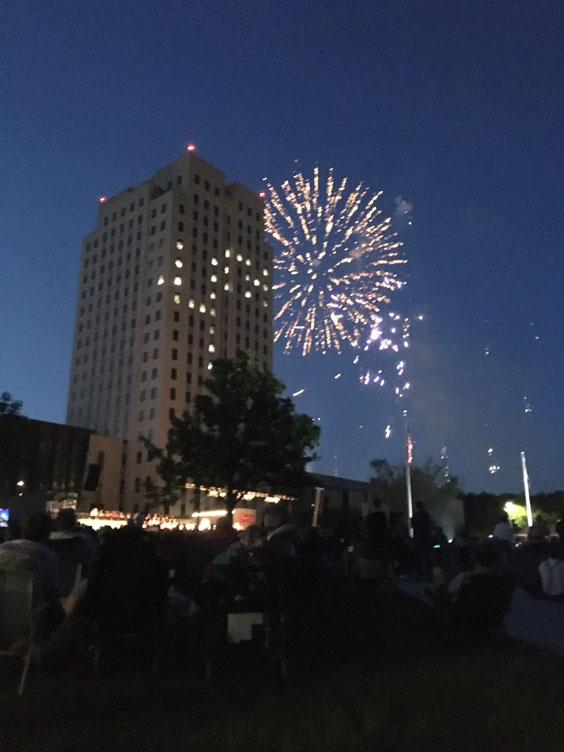
The North Dakota Capitol on July 4, 2022.
While I was using one of our free, word-searchable newspaper sites, Chronicling America (which you can learn more about using here), I stumbled on some truths about the interesting history of these light displays. Decorating the state Capitol building dates to the construction and completion of the current structure in 1934. In fact, it seems the architects and superintendent of the Capitol Commission had discussed means for using the tall tower to show various designs. The first display occurred in December that year. By 1935, this new space was being actively used, and honestly, it began to resemble a rotating advertising board.
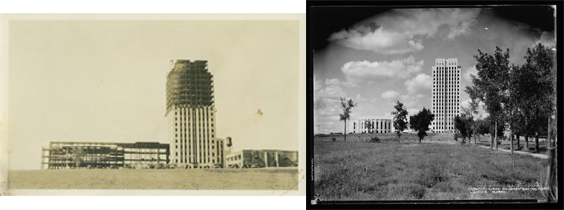
Pictures capturing the new Capitol building, which was completed in 1934. SHSND SA 2010-P-024-00024, 00012-00110
Since this chance discovery, I have learned quite a bit about the topic. The brand-new Capitol tower and its many windows were certainly noteworthy, and the local newspapers were happy to report on this feature. (Articles on cleaning those windows alone are blog worthy!) In no particular order, here are the top six most interesting early displays of Capitol building lights I have come across.
1. ND (surrounded by a square)
In 1935, a series of three “Third House” dances, a social event that was traditionally held in conjunction with the state Legislature, began in February. On March 1, 1935, the third of these “Third House” parties was held at the Capitol building in the Memorial Hall. The Bismarck Tribune stated that North Dakota Gov. Walter Welford, his sister Ethel, and Adjutant General Frayne Baker and his wife, Ruth, “headed the receiving line” as a reported 550 guests attended. The newspaper also noted that “in honor of the occasion, a special lighting effect was created by lighting the windows of the Capitol while the dance was in progress from 9:30 to 1:30. … Two giant letters, N and D, were surrounded by a frame, making a brilliant display which was visible for many miles.”
2. A cross
Described as a “burning cross,” this spectacle of light first appeared at the end of March 1934. The Bismarck Tribune detailed this effect in a brief article, noting, “The emblem extended from the top to the bottom of the tower structure and the cross-arm extended its full length.” The superintendent of the Capitol Commission was credited with the idea and how it was enacted. The windows of the Capitol building were blacked out “by blanketing all but two windows on many floors to make the vertical section of the cross and turning on all the lights in the floor … to represent the cross-arm.” This was intended as a display for the Easter season.
3. Giant letter “K”
Sunday, August 25, 1935, was the first day of a three-day district Kiwanis convention hosted in Bismarck. That evening, the Capitol windows were lit up in the shape of a giant “K,” which of course stood for Kiwanis. The Bismarck Tribune noted that the letter was displayed the first evening, “bespeaking a silent welcome.”
4. A double-barred cross (yes, it’s different!)
The National Anti-Tuberculosis Association used a double-barred cross as its insignia, and on November 29, 1935, this cross was “duplicated in special lighting” on the Capitol building. Notably, the Bismarck Tribune also reported that the insignia was partially red in color. This was probably the first time color was used in the light display. It marked the opening of the Christmas seal drive, stayed up until Christmas Day, and continued to be used for this purpose for a number of years.
5. Christmas tree
The oldest design still in use on the Capitol building, albeit slightly changed, is the Christmas tree. This design first appeared on the Capitol building in December 1935. In fact, according to the Bismarck Tribune, when the Junior Association of Commerce in Bismarck tried to revive “interest in home decorations” by sponsoring a Christmas lighting contest, the president of the organization noted that “the lighting effects on the capitol building,” as well as efforts put forth by “merchants in decorating the business district,” should inspire residents to beautify their homes. There may not have been color in the tree in 1935, but there was in 1936. That year, the tree was also outlined, as you can see in this image below published in the Bismarck Tribune. At that point, the tree was described as being in a red and green pattern.
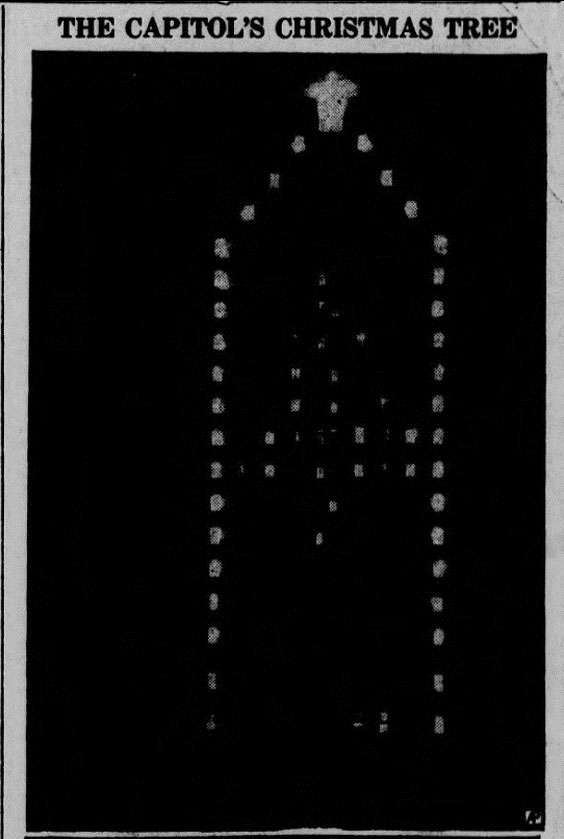
This image from the front page of the December 19, 1936, edition of the Bismarck Tribune is the earliest I have found of the tree on the Capitol building.
6. Christmas star … and first Christmas display!
We couldn’t talk about all of these cool displays without mentioning the very first Christmas display, at least that I can locate. The talk around town on December 20, 1934—and in the Bismarck Tribune—was of a Christmas star. Technically, this was not an effect created by use of the windows. This original five-pointed star was placed on top of the structure by Capitol workmen. The Tribune described it as “16 feet in diameter at the inner circle” with “120 electric lights.” While this star is the focus (the article is even titled “‘Star of Bethlehem’ shines on Bismarck”), it is worth noting there is also mention of what I believe was the first design used on the face of the Capitol building. “[The star] surmounted what appeared to be a Gothic cathedral, outlined on the face of the capitol tower by permitting light to shine only through certain windows.” I wish we had a photo of this!

The Capitol building displays a more familiar Christmas tree and star in 1962. SHSND SA 00884-00001
We don’t have many photos of the earliest exhibits of these lights in our collections, but luckily the reports in the newspapers are descriptive, and we have many later images. In the meantime, I sure enjoy imagining what those in the area thought of their new Capitol building and its rotating displays.



